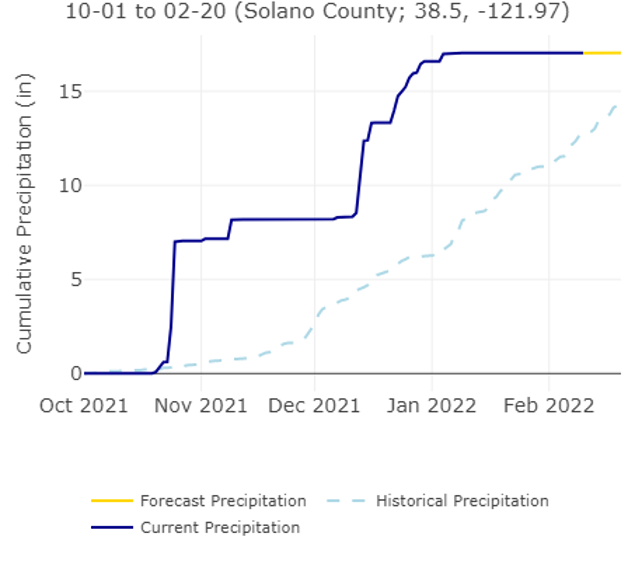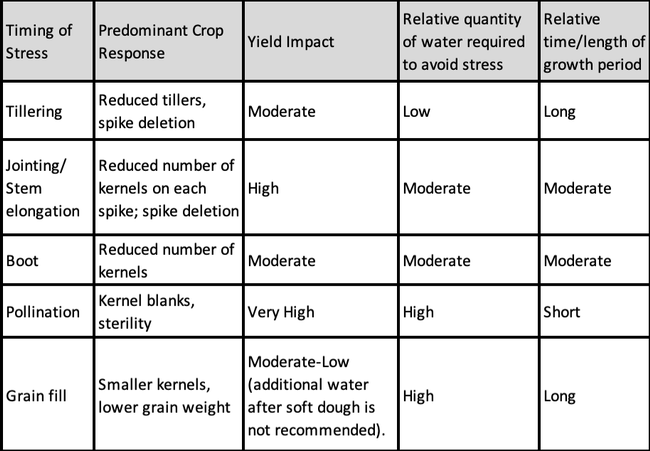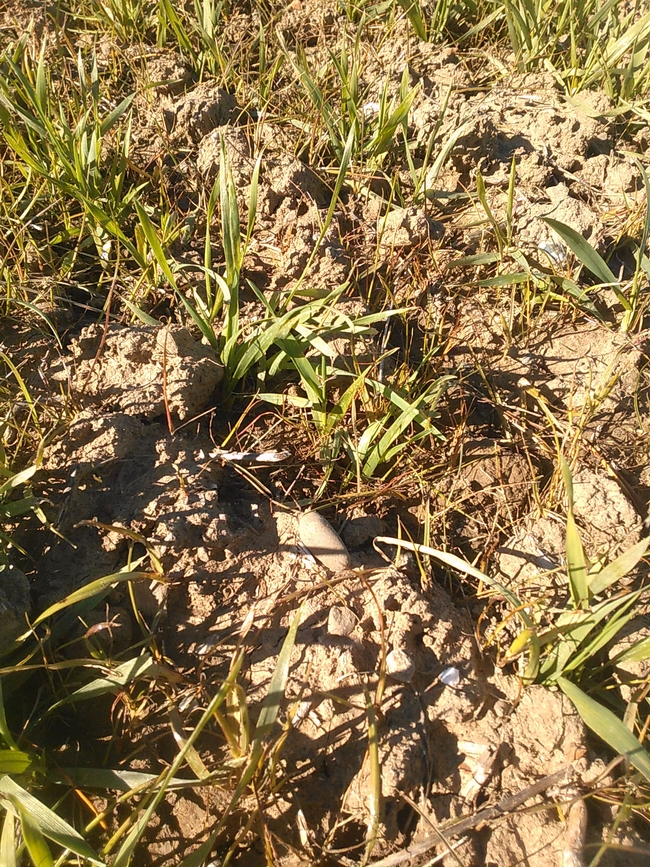Long dry periods are not uncommon in the Sacramento Valley between January and February. Despite the early season downpours, rainfall for the 2021-22 water year is dropping back to below average (Figure 1), and there is no rain on the near-term horizon. As a result, wheat growers may be debating whether to irrigate. Here are a few things to keep in mind:
Stress during the rapid growth phases can reduce wheat yield substantially
The amount of water needed to avoid plant stress at early vegetative growth stages is relatively little compared to later in the season (Table 1, see: Irrigation for Wheat and Other Small Grains In a Drought Year). This is because plant canopies have not yet fully developed, temperatures have been cool, and crops are not yet using a lot of water. Nonetheless, temperatures and growth rates are going to pick up over the next several weeks, and there is very little rain in the forecast. Therefore, it might be a good idea to consider a moderate irrigation in the next week or two.
Check the moisture status of your crop
Generally plants begin to stress when available water drops below 50% in the root zone (Figure 2). The NRCS has developed guidelines for determining soil available water capacity by feel for different soil textures (Figure 3 and 4). Tensiometers and moisture meters are also valuable tools, but their numbers will mean different things in different soil types. So growers should do their homework to know what those numbers mean for actual moisture status in the field.
Figures 3 and 4: Sandy clay loam, loam, and silt loam soils at 25-50 (left) percent moisture and 50-75 percent moisture (right). These images and images for other soil textural classes can be found on the NRCS Website. Photo: NRCS
If you are using a soil nitrate reference zone, consider taking reflectance and soil nitrate measurements and using an irrigation as an opportunity to apply nitrogen if plants are showing a deficiency signal.
If you are intending on applying the majority of your nitrogen fertilizer in-season, take the appropriate soil and canopy measurements and use the UC Nitrogen Fertilizer Management Webtool to get some idea of how much nitrogen would be needed to meet your adjusted yield goals.
Conclusions
By reducing stress at critical times in the crop's growth cycle and monitoring soil moisture closely, wheat growers can help their crop maintain optimal growth and yield potential in case more rain arrives later in the season. If more rain does not arrive, growers should still pay close attention to the growth and development of their crop and prioritize water use accordingly (Table 1).





